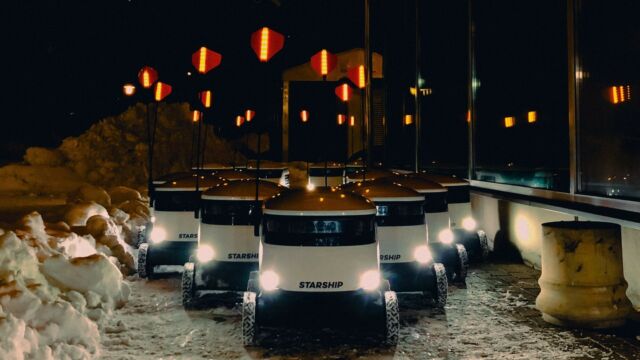
Sidewalk delivery robot services appear to be stalling left and right, but a pioneer in the concept says it is profitable and has now raised a round of funding to scale up to meet market demand. Starship Technologies, a startup out of Estonia that was an early mover in the delivery robotics space, has picked up $ 90 million in funding as it works to cement its position at the top of its category.
This latest investment round is being co-led by two previous backers: Plural, the VC with roots in Estonia and London that announced a new $ 430 million fund last month; and Iconical, the London-based investor backed by Janus Friis, the serial entrepreneur who was a co-founder of Skype, and who is also a co-founder of Starship itself.
It brings the total raised by Starship to $ 230 million, with previous backers including the Finnish-Japanese firm NordicNinja, the European Investment Bank, Morpheus Ventures and TDC.
As with previous rounds, Starship Technologies is not disclosing its valuation.
In the decade since it was co-founded by Friis and Ahti Heinla (Skype’s first engineer), Starship says that its robots have collectively traveled 11 million miles across neighborhoods and campuses in some 80 locations across the U.S. and Europe, making 6 million deliveries. Its partner/customers include companies like on-demand transport company Bolt, the grocery chain Co-Op and food services companies like Aramark, Sodexo and Chartwells and Grubhub.
Heinla — the CTO who was quietly reinstated as CEO in December — said that the company will use the new funds to fuel more geographic expansion. It also will soon launch a new robot manufacturing scheme with an as-yet unannounced partner to produce its vehicles more quickly; and it plans to continue to invest in its software and logistics services. Its robots currently operate at Level 4, very close to fully autonomous, they typically have 18 hours of battery life and they are now getting upgraded to charge wirelessly.
Heinla said in an interview that the 6 million deliveries and 11 million miles traveled make his startup effectively the biggest player in the space at the moment. But that statement needs to be taken in context.
Amazon, in 2023, made well over 2 billion deliveries of Prime-based goods to customers in the U.S. alone: a sign of how big the market potential may be, but also how small Starship is today.
On the other hand, it’s notable that Starship is around, and profitable, at all. The shutdown of high-profile sidewalk delivery robot efforts from FedEx and Amazon, the restructuring at Nuro and issues we’ve heard about at other businesses all speak to the struggles of building operations in this space. Add to that a legal dispute that Starship’s investors were facing in the U.S. to complicate matters.
To that end, Starship wouldn’t comment on why its previous U.S.-based CEO, Alastair Westgarth, left the business at the end of last year, but its seems that Starship has been thinking about how best to move into its next phase in the current market, with a shift into focusing deeper in Europe, rather than primarily on the U.S.
“We are not focusing exclusively on the U.S. at the moment,” Heinla said. “What I can say is that I was the founding CEO. There was a change in the company and we wanted to position ourselves well for the future.”
Taavet Hinrikus, the Plural partner who was an early investor in Starship (and, like Heinla and Friis, also a very early Skyper) said that the leadership change happened independently of the fundraise, but that he supported it.
“Building tech companies is hard,” he said. “You know, the magic is about the founders, and here we have co-founders who are on a hell-bent mission to change the world.”
There is indeed a window of opportunity for Starship and others like it. While self-driving cars and autonomous car services continue to be foxed by difficult unit economics and safety concerns, municipalities are embracing a wider range of mobility alternatives to help reduce traffic and pollution. Moreover, it sounds like people are more likely to make room for the humble delivery robot slowly rolling down the sidewalk.
“In contrast with self-driving cars, I think our robots always have been accepted in communities,” Heinla said. “People really love them. You know, they try to feed bananas to them.”







